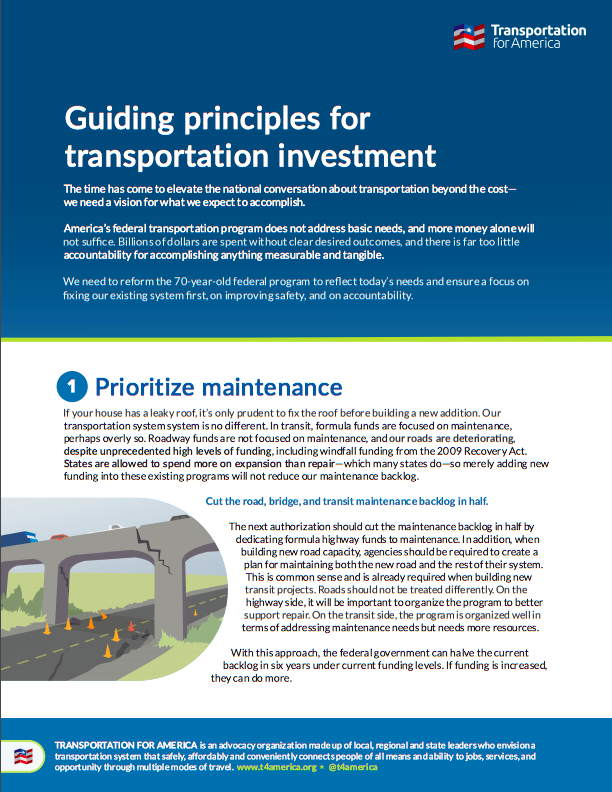Angry that speed is prioritized over safety? Here’s what to do about it
Last week was #SafetyOverSpeed week here at Transportation for America, where we took a deep dive on our second principle for transportation policy: design for safety over speed. We spent the week discussing how prioritizing speed makes it almost impossible for most Americans to reach destinations anyway other than driving. Now we need to do something about it. […]
Our seven favorite tweets from the #SafetyOverSpeed tweet chat
Last week we hosted a tweet chat to discuss the importance of prioritizing #SafetyOverSpeed, in tandem with our week of blogs discussing our second principle for transportation policy. Here are our seven favorite tweets from the chat.
Safety over speed: Safe streets are climate-friendly streets
Lowering speeds have more benefits besides saving lives: street designs that keep speeds low help reduce carbon emissions, too. In this blog post by our friends at the Natural Resources Defense Council (NRDC), Ann Shikany and Carter Rubin discuss how safer roads increase rates of biking, walking, and transit ridership, and enable fewer and shorter car trips.
Safety over speed week: The U.S. builds death traps, not streets
We took a look at one busy road outside of Orlando where a dozen people have been struck and killed by drivers in recent years. The mix of high-speed traffic with people walking, biking, and taking transit is a dangerous combination; in the event of a crash, people die. The Complete Streets Act of 2019 would go a long way to give local government more resources to redesign these dangerous streets so everyone can travel along them safely.
Which street is the most dangerously-designed? You decide!
It’s time to vote! Throughout the week, readers sent us photos of streets that are designed for speeds far higher than the posted speed limit or where the speed limit is way too high for the context. Today (Friday, Nov. 8), you can vote for the worst offender on Twitter. It’s been #SafetyOverSpeed week here […]
Safety over speed week: The key to slowing traffic is street design, not speed limits
Today, as “safety over speed” week continues, we’re running a guest post from our friends at Strong Towns that uses some simple pictures to explain how street design is a far more powerful tool for slowing down traffic and prioritizing safety compared to the strategy of lowering speed limits.
Safety over speed week: Our transportation system values some lives more than others
U.S. transportation policy focuses first and foremost on ensuring that drivers can travel with as little delay as possible. But this laser focus on speed sidelines other more important considerations like the preservation of human life and the health impacts of vehicle pollution. Prioritizing safety in our transportation policy—at the federal, state, and local levels—would be a major step towards a more equitable transportation system.
Safety over speed week: Prioritizing safety is intrinsically connected with improving transit service
Nearly every bus transit rider starts and ends their trip with a walk, and decisions made to prioritize vehicle speed over safety often have significant impacts on transit. This excerpt from the new book “Better Buses, Better Cities” helps explain how better bus transit and prioritizing safety over speed are intrinsically related.
Safety over speed week: Drive like your kid business lives here
Economic slowdowns are generally a bad thing. But slowing down might be good for the economy, so long as we’re slowing vehicle speeds. Streets designed to accommodate (slow) drivers, people walking and biking, and transit riders are better for businesses, save money on health care costs, and can help businesses attract and retain talent.
Safety over speed week: Slip lanes would never exist if we prioritized safety over speed
A specific design feature on our roadways is the quintessential embodiment of what happens when speed is the #1 priority and safety becomes secondary. Slip lanes, those short turning lanes at intersections that allow vehicles to turn right without slowing down, are incredibly dangerous for people walking. Yet states & cities keep building them. Why?





